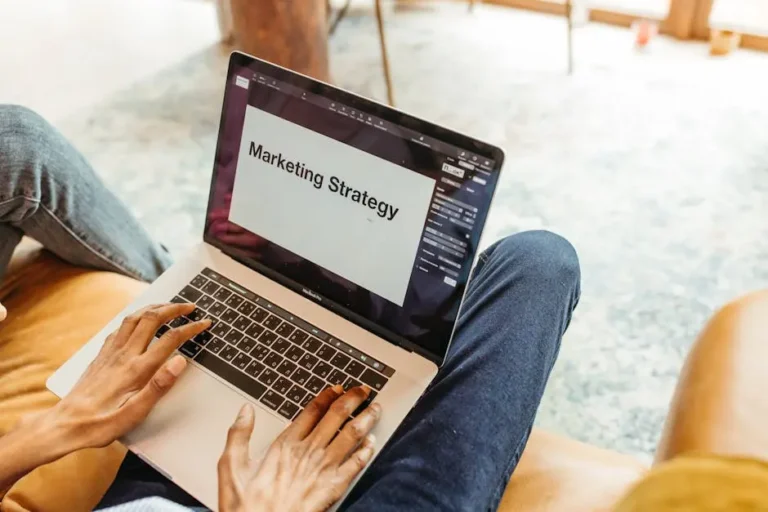Digital Storytelling: How to Use Narrative to Build Trust and Drive Sales

In a world of noise, facts don’t convert—feelings do. You can list every feature, offer every bonus, and explain every step of your process, but if your message doesn’t land emotionally, it won’t move your audience to act.
That’s why digital storytelling has become one of the most powerful tools in modern marketing. It’s not just fluff or filler. It’s the foundation of connection, the thing that builds trust and drives conversions.
If your content feels disconnected, your funnel isn’t converting, or your audience isn’t engaging, it might be time to stop explaining and start storytelling.
What Is Digital Storytelling (Really)?
Let’s get one thing straight: digital storytelling is not just your brand history or a few behind-the-scenes Instagram captions. It’s the intentional use of narrative to guide your audience from awareness to action.
Storytelling in business is how we:
- Communicate mission and values in a way that feels human
- Highlight our client’s journey so future clients can see themselves in the process
- Create emotional resonance—so it sticks
- Position our offer as the natural “next step” in a transformation
In short: it’s how we make people care—and how we help them act.
Why Story Sells When Strategy Alone Doesn’t
You can have the most logical offer in the world. But logic doesn’t trigger buying decisions—emotion does. And story is the gateway to emotion.
When you tell a story, the brain engages differently. Your audience is no longer reading content. They’re experiencing it.
They’re seeing themselves in the before.
They’re imagining what’s possible in the after.
They’re connecting with your values, your energy, your voice.
That’s when trust is built—and conversions happen.
The 4 Core Elements of a High-Converting Story
You don’t need to be a novelist to write content that moves people. You just need to follow a proven structure:
1. A Clear Starting Point (The Problem)
What was the struggle? The pain point? The moment where “this isn’t working anymore” became loud and undeniable?
Whether it’s your personal journey or your client’s, start at the point of friction. That’s where your reader begins to relate.
2. The Journey (Your Process or Method)
What path did you or your client take? Share the messy middle—what shifted, what was tried, what worked (or didn’t).
This is where you weave in your framework, your methodology, or your unique process—without it sounding like a pitch.
3. The Transformation (Before & After)
What changed? What’s now possible that wasn’t before? Help your audience feel the win—whether it’s clarity, clients, revenue, time freedom, or confidence.
Transformation is the emotional payoff.
4. The Purpose (Why Now Matters)
Why is this story relevant right now? Tie it to the urgency or season your audience is in. Make the transformation feel both timely and attainable.
Where to Use Digital Storytelling in Your Business
Story belongs everywhere—not just in blog posts or origin videos. Think about the places your audience interacts with you. Every single one is an opportunity to build trust:
- Email Campaigns & Nurture Sequences: Share mini client case studies, founder reflections, or narrative intros to lead magnets
- Sales Pages & Landing Pages: Start with story instead of stats. Frame your offer as the conclusion to a transformation arc
- About Pages: Focus less on your bio and more on why you do what you do—and how that helps your people
- Social Media Posts: Especially on platforms like Instagram and Threads, storytelling builds intimacy and relatability
- Ad Copy: Lead with story-based headlines and short-form testimonial narratives. Facts come second.
How GHL (HighLevel) Helps You Scale Your Story
Here’s where tech and heart meet.
GoHighLevel is one of the most powerful tools you can use to deliver your story at scale. It doesn’t write the message—but it makes sure the right person hears it at the right time.
Inside GHL, you can:
- Build automated email sequences that reflect your full brand narrative
- Trigger personalized messages based on where a lead is in the story
- Use segmentation to align messaging with awareness level or interest
- Follow up like a human, not a robot—automating the delivery, not the relationship
It’s how you take that handwritten-feel and deliver it to 1,000+ people with precision.
Story That Sells: A Real Client Snapshot
One of our clients came to us feeling invisible in a crowded coaching space. Her content was polished, her program was solid—but her leads weren’t converting.
Here’s what we did:
- Helped her clarify her brand narrative and positioning
- Rebuilt her nurture emails around real client transformations
- Wrote a sales page using her client’s voice and real before/after milestones
- Aligned her entire funnel with the emotional journey of her ideal client
She didn’t change her offer. She changed her story—and that alone led to a 3x increase in conversions.
What Happens When You Lead With Story
When you stop talking at your audience and start speaking with them, everything shifts.
They stop scrolling.
They start responding.
They start trusting you before they even meet you.
Digital storytelling is what turns strangers into subscribers—and subscribers into paying clients.
Your Next Step: Build Your Content Like a Story, Not a Silo
If you’re creating blogs, emails, posts, and funnels in isolation, it’s no wonder your message feels scattered.
Start with a strong brand narrative. Then let every piece of content reflect a different chapter of that story.
Here’s how to begin:
Explore Coaching with Lisa Benson
Book a Clarity Call
Start with the 9-Line Business Roadmap






